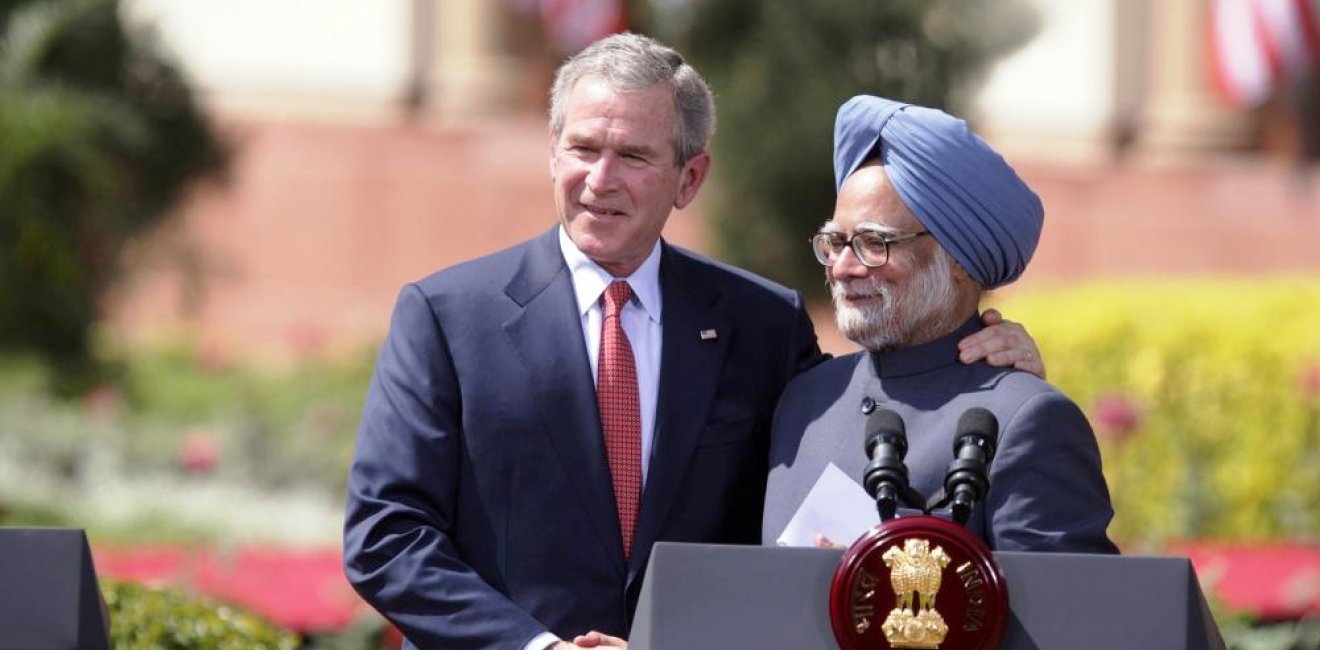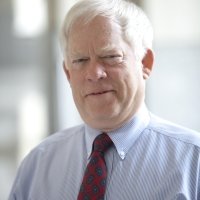The political class in Washington is consumed at the moment with parsing each clause in last week’s nuclear agreement with Iran for secret meanings, hidden loopholes and possible portents. That America would come to terms on a topic of such political and strategic sensitivity with a state long viewed with suspicion, if not outright antagonism, alarms some and angers others. Questions of who snookered whom abound. Sound familiar?
The July 14, 2015, nuclear deal between Iran and the US-led P5+1 comes almost exactly 10 years after the 2005 civil nuclear accord between India and the US. Like the 2005 agreement, the Iran deal came together only after months of tough behind-the-scenes negotiations. As with the earlier India-US accord, it remained an open question up until the last moment whether an agreement between the two sides could be reached.
There are, of course, fundamental differences between the two nuclear deals. The 2005 pact was a bilateral affair, whereas last week’s accord required painstaking negotiations between Washington and its partners (especially China and Russia) before anyone could even think about sitting down with Tehran. Unlike the 2005 agreement, which came as a complete surprise to nearly everyone in both India and the US, the attention of the world’s media had been fixated for weeks on every unsubstantiated rumour coming out of Vienna, the venue of the Iran-P5+1 talks.
It will be years before we know whether the agreement with Iran follows the precedent set by the India-US accord and opens the way for a fundamental transformation of US relations with Tehran. Indians, with ample reason to desire cordial ties with both countries, should hope that it does.
Nicholas Burns, a retired US diplomat who has worked as hard as anyone to build a substantial and substantive Indian-American partnership, recently remarked that New Delhi and Washington are “aligned but not allied”. That this observation is in both countries today regarded as unexceptional is the result of the 2005 agreement reached by then Prime Minister Manmohan Singh and then President George W. Bush.
The confluence of national interests suggested by Burns’s characterisation was not inevitable. Indeed, the history of India-US relations up to 2005 had been marked by acrimony and bitterness. Only seven years earlier, Washington had slapped far-reaching sanctions on India because of Delhi’s 1998 nuclear tests. Singh and Bush had the vision to see beyond the recriminations of the past and imagine a different future. For all the mistakes each made during his time in office, their handiwork was transformative.
The odds that the 2015 nuclear agreement will have a similar impact on US-Iran relations are much longer. That relationship is burdened with still-raw memories, on both sides, that may not yet be ready to heal. For most Americans, Iran’s sponsorship of groups and activities associated with terrorism, in Lebanon, Syria, Yemen and elsewhere, raises obstacles to better relations that extend well beyond the scope of one nuclear agreement. Iranians have their own litany of complaints about US policies, past and present.
The most immediate order of business is to ensure the successful implementation of the Iran agreement. The US experience in dealing with the North Korean nuclear issue leads many (probably most) Americans to assume that Iran will try to cheat on last week’s pact. At a minimum, the different priorities of China, Russia, the US and the European parties to the accord will pose a huge challenge for maintaining a united front in the face of any suspected Iranian violations of the agreement.
America’s political dysfunction presents a challenge of a different sort. Unlike the India-US agreement, which enjoyed wide support from both US political parties, the Iran accord is already the subject of intensely partisan debate in the US. Republicans are virtually united in their conviction that this deal must be blocked. Nor can President Barack Obama rely upon unbroken support from his fellow Democrats, a number of whom appear prepared to break ranks with the White House over the agreement.
Most analysts expect Obama to eventually prevail over congressional efforts to defeat the accord. Nonetheless, the rhetoric from the pact’s critics will be over-the-top, and American bickering may encourage those in Iran who seek to overturn the deal for their own reasons.
This will sound familiar to those who recall the heated debates in the US and especially India over the wisdom of modifying long-held principles in pursuit of a landmark nuclear accord. India finally signed on to the nuclear partnership only after Singh barely escaped a no-confidence vote.
Events since 2005 have validated the hopes of the authors of the nuclear deal. It hasn’t always been easy, and it’s seldom been pretty. Even today, 10 years after Singh and Bush announced their historic breakthrough, the nuclear accord has yet to provide one kilowatt of energy for India, or one dollar of profit for US energy firms.
Even so, the India-US civil nuclear accord proved a gamechanger for broader ties between Delhi and Washington. A decade hence, perhaps we will be able to describe the recently signed nuclear agreement with Iran in similar terms. And if animosities as deep as those dividing America and Iran are capable of being bridged, might not there be hope for the future of India-Pakistan relations as well?
Unfortunately, many Pakistanis have concluded that Prime Minister Narendra Modi is uninterested in improving ties with Islamabad.
Fairly or not, they are watching for signs that Delhi intends to follow up Modi’s meeting with his Pakistani counterpart, Nawaz Sharif, in Russia earlier this month with meaningful moves aimed at thawing the current frosty relationship between the two countries.
If the theocracy in Tehran can conclude a substantive deal with “the Great Satan”, even as one side continues to accuse the other of systemic support for terrorism, would it be too much to hope that India and Pakistan might yet find a mutually advantageous path to narrow the chasm that has separated these fraternal twins for so long? Common sense and good policy alike dictate that they try.
The opinions expressed here are solely those of the author.
This article was originally published in The Indian Express.







